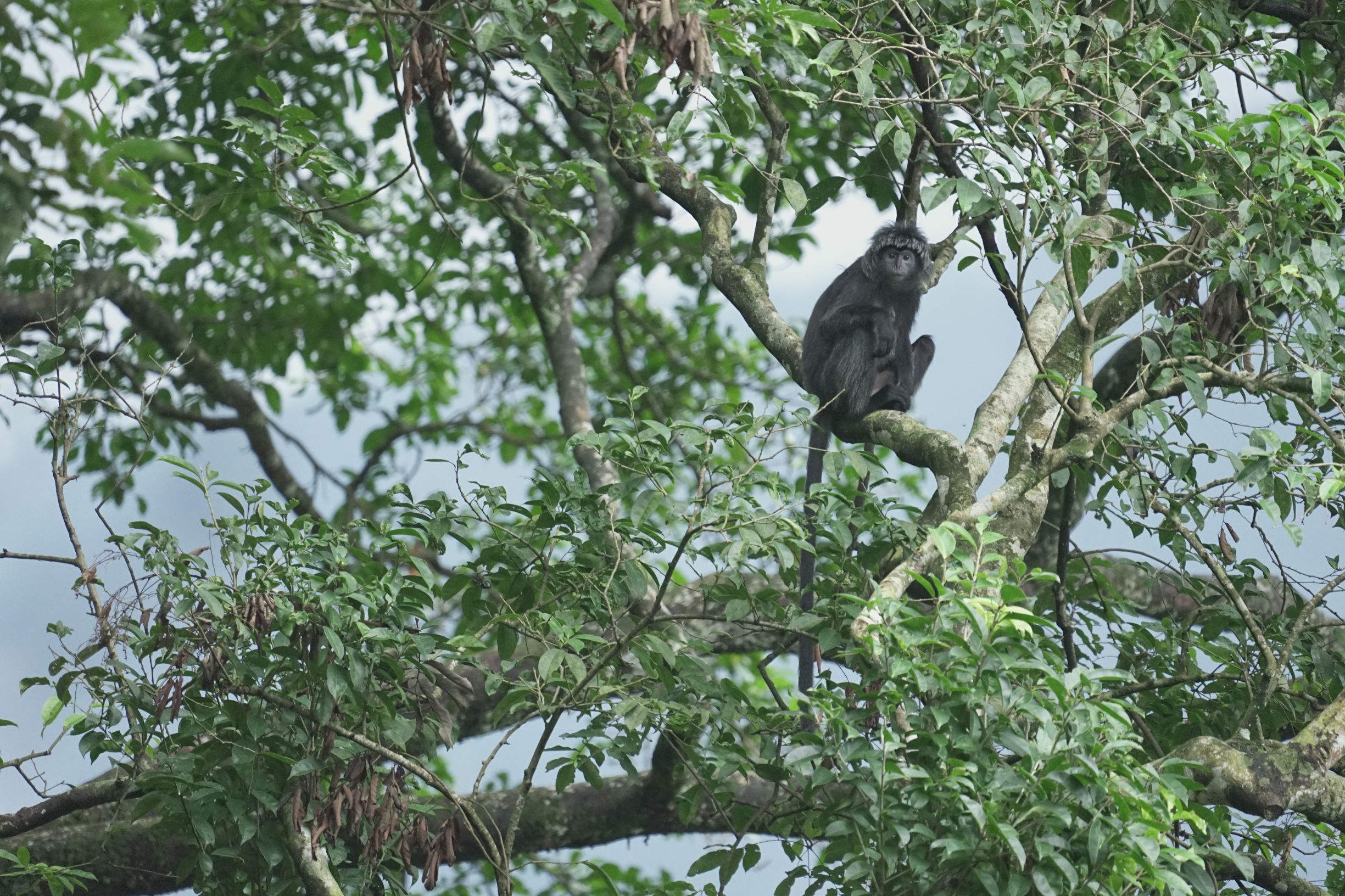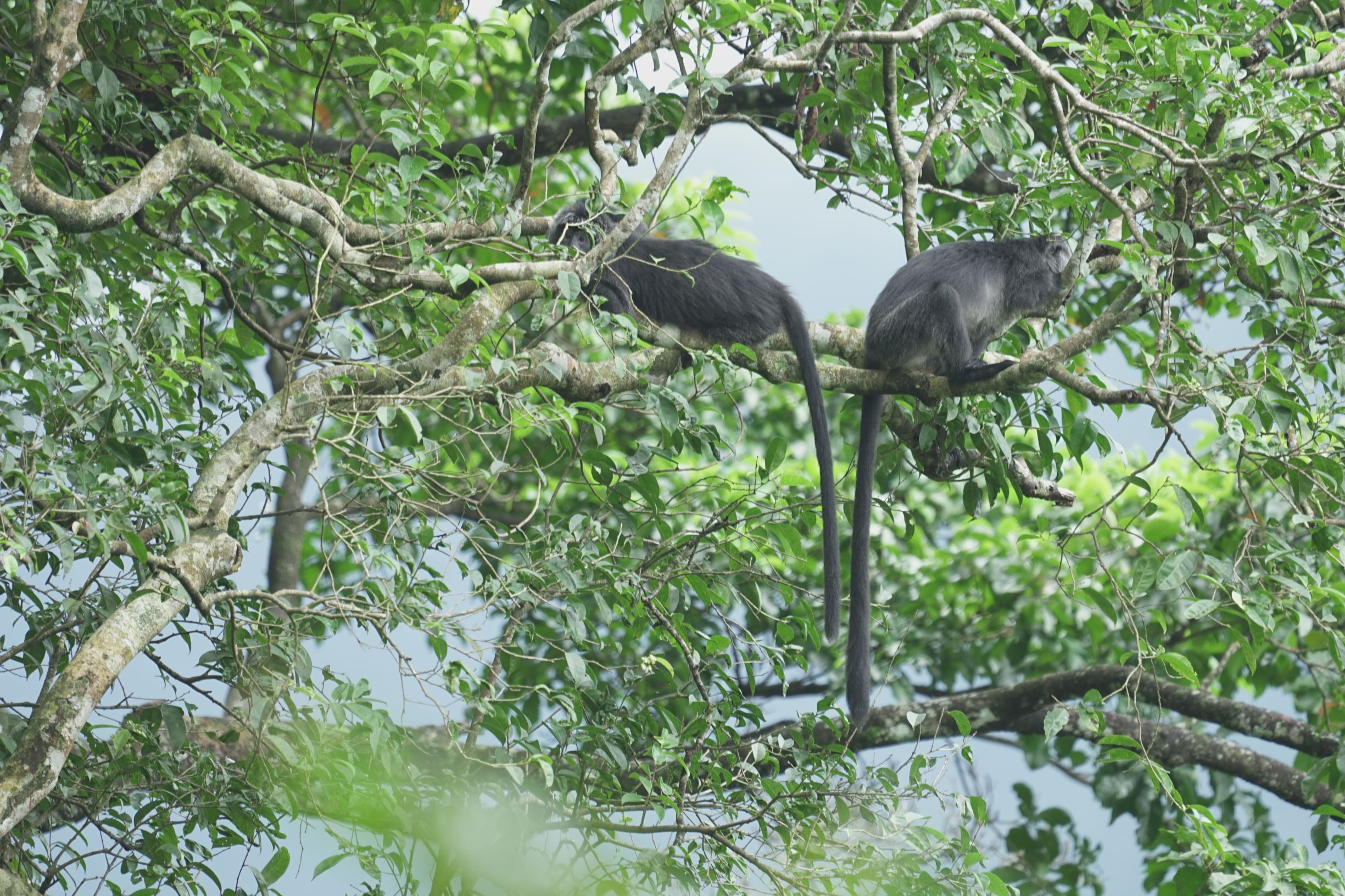Photo story by Arif Setiawan
1. The Javan langur (Trachypithecus auratus) is a leaf-eating monkey classified as Vulnerable by the IUCN. Found in Java and nearby islands, it inhabits the Sokokembang forest near Kayupuring Village in the Petungkriyono District, Pekalongan, Central Java Province. They live in groups of two to 15 individuals and are polygynous, meaning that in each group there is one adult male and several females.

2. Javan langurs are often encountered along the forest road in leading to Petungkriyono. Although their numbers have not been researched to date, the SwaraOwa team have observed approximately six troops of langurs frequenting that road.
3. Newly born Javan langurs are orange, but turn black after an average of 2.9 months (Trisilo et al. 2021). Their orange fur makes the babies stand out and allows the adult members of the troop to look out for them and make sure .

4. Javan langurs move on all fours (quadrupedal). They spend most of their lives in the trees and only occasionally come down to look for insects and other food in the understorey or forest floor.
5. Javan langurs are a protected primate species under Indonesian law.

6. Javan langurs are often lethargic because they need time and energy to digest the tough leaves that make up their staple diet. When seen dozing off on a tree branch, these langurs may actually be waiting for the digestive bacteria in their guts to break down their food, much like ruminants.
7. In February 2021, we counted a total of six females with babies in the Sokokembang forest – some were still orange, while others had black fur like their mothers.

8. We also observed two langurs grooming each other. Aside from keeping langur fur free of parasites, grooming also serves as a social activity to strengthen group ties and relieve tension or stress.
9. Being relatively dense, Petungkriyono Forest is suitable habitat for Javan langurs. The fact that some langurs are easily observed along the road and not too bothered by humans can be used to promote ecotourism (primate-watching) in the area. However, measures will need to be implemented to ensure humans keep a distance and do not litter or feed the langurs.




